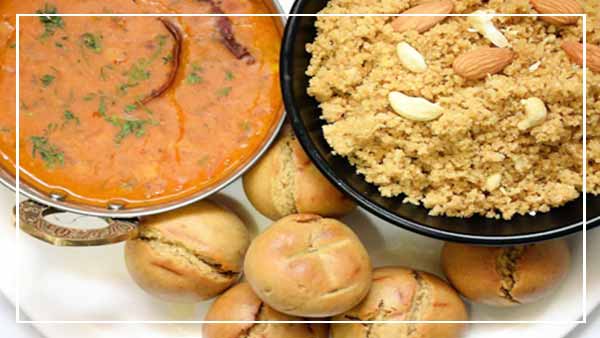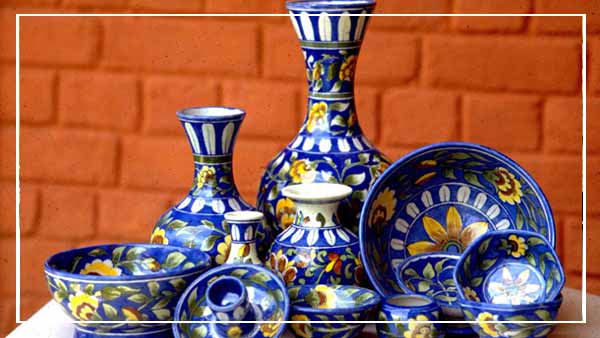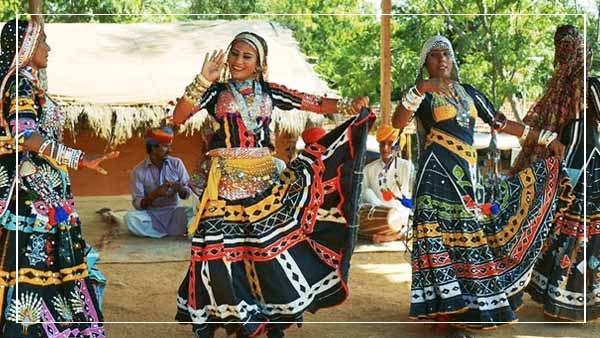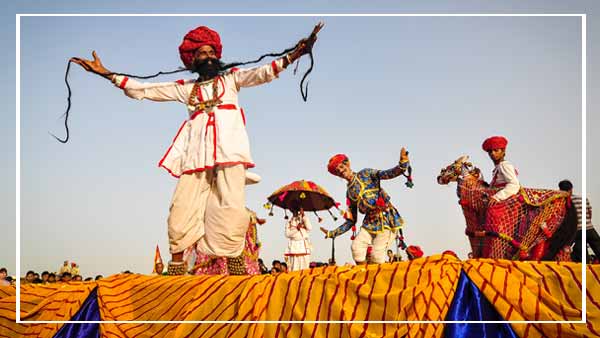Culture of Rajasthan is evident through the colorful cities, the splendid fortifications, the vibrant markets and people’s lifestyles across the state. Rightly referred to as the “Land of the Kings,” Rajasthan is dotted with numerous Forts , Palaces, Havelies, each reflecting the royalty of the days gone. One of the main factors responsible for a unusual culture is the geographical character of the society. Culture of Rajasthan The habitants come up with various masks, festivals and rituals to combat the boring and dry living conditions. The people love to use colors in their daily lives, from the turbans and saris they wear to the ornaments they use to decorate the camels Entertained. Join the folk music , dance, crafts and other forms of art. Culture of Rajasthan is capturing you and taking you to a whole different dimension.
Atithi Devo Bhavo
‘Atithi Devo Bhavo’ means treating your guests as you would treat God for sure. This idea is a part of Culture Rajasthani. They treat their visitors well, and make them want to come again. Many people in Rajasthan are associated with jobs related to tourism and therefore take this term extremely seriously as they earn A income from and promised to represent the passengers Culture of Rajasthan
Musical Instruments of Rajasthan:
The Rajasthani musical instruments are important for completing and melodiating the folk songs. The instruments are played with such abilities that as it sounds tuneful enough, some of them can be played individually. Hypnotic songs and instruments are one of the cultural attractions for the visitors to Rajasthan. The nifty instruments are made locally, using a variety of materials such as bamboos, clay pots, dried up shells and more. Instruments are classified in this way: percussion instruments are usually the dhol or drum and the smaller one is called the dholak. The second one is the Wind Instruments, under this segment comes the flute and the shehnai. Such wind instruments are popular among the snake charmers and are in several ranges; Algoza is a double flute, Satara is a two-flute band, and they also use their own variant of trumpets. The next one is the Stringed Instruments, the Sarangi is Rajasthan’s most famous string instrument, Played with a bow drawn across the strings, and fingered notes on the strings. Other popular string instruments include the Kamaycha, Ravanhatta, Chautara, etc. The last one in the group is the Autophonic Instruments, the bells, knows that Ghanti is widely used for songs of devotion. Ghungroo (angle bells) mostly worn around the waist by the Bhopas and they make moves
Cuisine of Rajasthan:

Cuisine of Rajasthan: Because of smaller rainfall in Rajasthan, vegetable growth is reduced. We emphasize the growth of pulses though. The locals prefer food items which can last for several days and do not require heating. Rajasthan is famous for making what Bikaneri Bhujiya is called, It is consumed as a drinks snack. Pure Ghee is the replacement for oil when cooking and it is used in large amounts by the locals, the Dal- Bati- Churma is a dish popular to all. Rajasthanis are fond of sweets, so ghevar, mawa, and petha are prepared. Other common snacks include Mirchi Bada and Pyaaj Kachori.
Ethnicity of Rajasthan:
Ethnicity of Rajasthan – The Rajputs are primarily related to the Rajasthan province, they ruled the region until the 20th century. We started to fuse in later years, mostly with the Mughals. This cycle had begun to affect the state’s race. There are many tribal communities in Rajasthan; the original inhabitants of the place are the Bhils and the Minas. There are other tribal groups that share a number of common traits like the Sahariyas, Gasuliya Lohars, Sidhis and more.
Some of Rajasthan’s popular traditional attires are made from hand-printed cotton fabrics, tie and dye designs, mirror works, zari works and more. The accessories are silver bangles worn on hands and feet by women, camel skin shoes and men’s colorful turban, which adds to the place Culture of Rajasthan.
Arts and crafts:

Arts and crafts Rajasthan ‘s exquisite handiwork is famous around the globe. The Rajasthani commodities are very distinct due to the specifics and the color use. By creating jewelry, fabrics, embroidered work, leather work and other crafts the artistic skills are evident through the detailed work put into it. For a long time, the miniature paintings and the wall paintings depicting stories are performed, and are still famous. Rajasthan’s puppets are a showpiece to us, but the locals still perform the puppet show, the wooden dummies on a miniature stage are showcased. The textile from Rajasthani is famous for their unique color schemes and designs. Under Rajasthani crafts come the tie and dye style, the embroidered, hand block printed fabrics. The clothes, textiles, like the zari, the mirror work and the metallic thread embroidery are more elaborate and beautiful. Other popular crafts are the production of leather ware, carpets and pottery.
Music of Rajasthan:
Music of Rajasthan: In rural societies the folk music of the desert plays an important role. The songs are hypnotic and compelling, integrated in every occasion and festival. More importance is given to the lyrics which are more like a poetry than to the melody. The women of Rajasthani sing love songs about wicked mother in law or water while some of the folk songs are dedicated to various deities. The various communities in Rajasthan are in the singing profession, mostly the Dholis, Dhadhis, Fedalis Patars and Kanchari (prostitutes), Nats, Hawais, Rawals and more. There is a varied collection of musicians, all managing to engage you with their songs and folk music.
Dances of Rajasthan:

Dances of Rajasthan: The entire surrounding comes alive when traditional Rjasthani dancers take center stage. Any festival or flair remains unfinished, with no dance show. The dance forms are folk in nature, recalling the customs and practices of rural areas. Local enthusiasm can be seen in their eagerness to retain the form of dance which they follow religiously. The gestures and the courageous steps are part of the dance scheme, including the glamorous and colorful costumes that add up to the dance forms’ flamboyance. The dancers act with zeal, all the things finished, alluring the spectators. Rajasthan has many forms of dance, some of them being: the Kalbelia dance, the ancient dance style, performed by women in the Kalbelia community (snake charmers by profession). The Ghoomar Dance, done by the woman Rajput, graciously covers her face. Chari Dance, because it is a dance style with pots on the head and lamps on hand , requires much practice and skills. There are more unique dance styles worth discovering.

